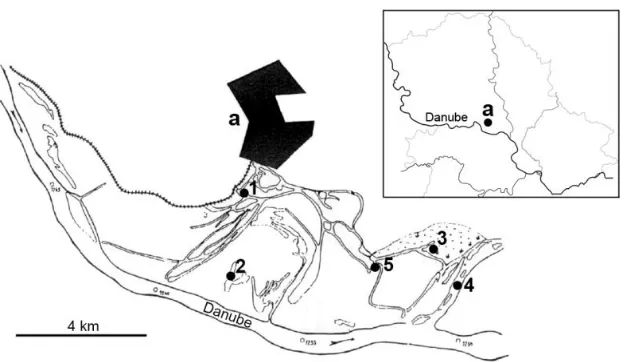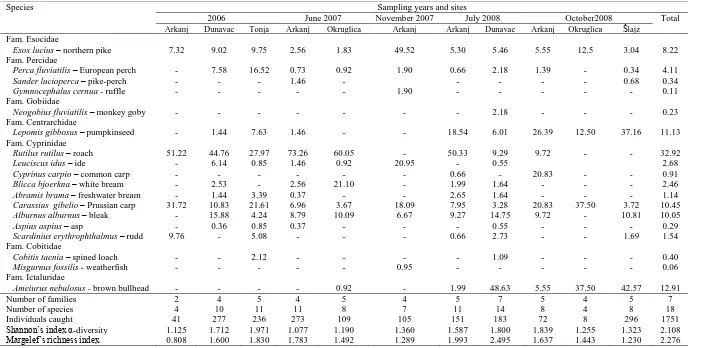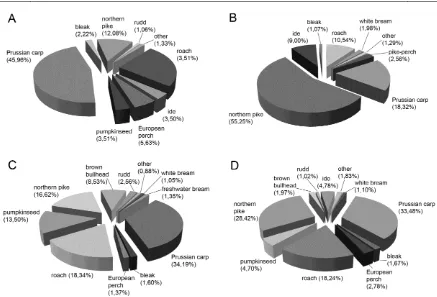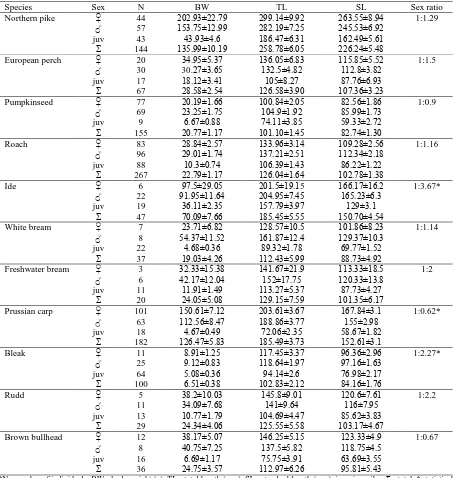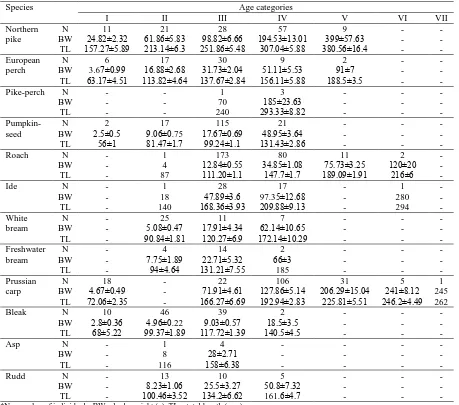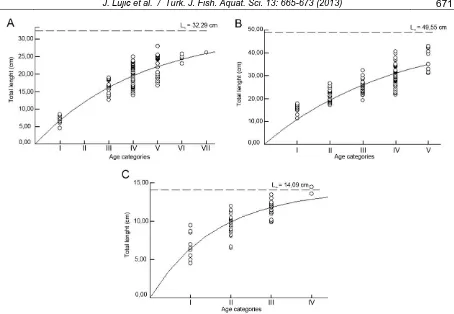Introduction
Koviljsko-Petrovaradinski Rit is a forest landscape intersected with fields, rushes, reed-patches and marshes with aquatic marsh vegetation. Together with another marsh near Apatin (Gornje Podunavlje), it is the last remaining flood area of the Danube River on its flow through Serbia and is the remainder of once vast marsh biotopes. The marsh territory is a flood plain and is exposed to the affects of Danube floods. The consequence of sudden drop in the Danube water levels are numerous meanders, branches, oxbow lakes, river islands, ridges and sand dunes. By the regulation of the Government of the Republic of Serbia, and after proposal by the Institute for Nature Conservation of Serbia (Budakov, 1995), Koviljsko-Petrovaradinski Rit was declared a Special Nature Reserve in 1998.
In the last 30-year period, within ichthyological research, the following researches were conducted: ichthyofauna composition research (Budakov et al., 1983; Maletin and Kostić, 1988), fish growth and diet (Maletin et al., 1991) and fish sex structure (Popović
and Kostić, 2002).
Taking into account the long period of research of this site and the claim that, in earlier period, changes have occurred in physical-chemical and biological characteristics, the aim of the paper was to show, as a part of complex research conducted in the period between 2006 and 2008, if the qualitative and quantitative ichthyofauna characteristics have changed. Furthermore, the objective of this study was to examine morphometric characteristics, sex ratio, age and growth of caught fish species. This study presents the first data on growth parameters (L∞, K, t0, and ø’) of certain fish species from the Koviljsko-Petrovaradinski Rit. Finally, population parameters of the highly invasive Prussian carp were discussed. These analyses can link with previous and continue ichthyological research started over 30 years ago.
Materials and Methods
Koviljsko-Petrovaradinski rit is located on the Danube’s left bank, near the town of Kovilj (Figure 1). It covers the surface of 4000 ha, and its total length is 22 km. Ichthyological material was collected between August 2006 and October 2008 with standard
* Corresponding Author: Tel.: +381.646 259819; Fax: +381.214 50620; E-mail: jelena.lujic@dbe.uns.ac.rs
Received 27 March 2013 Accepted 7 November 2013
Abstract
Qualitative and quantitative ichthyofauna composition, morphometric characteristics, sex ratio, age and growth for fish species from Koviljsko-Petrovaradinski Rit were examined. A total of 1715 individuals which were classified into 18 species, from 7 families, were caught between August 2006 and October 2008. The greatest proportional contribution in total number of fish had Rutilus rutilus, while the greatest mass contribution had Carassius gibelio. Diversity and richness indices showed the highest values in the Dunavac locality. Female:male sex ratio varied from 1:0.33 in Sander lucioperca to 1:3.67 in
Leuciscus idus and could not be observed in Aspius aspius, Neogobius fluviatilis and Cobitis taenia due to presence of only juvenile individuals. According to the scale readings, age distribution varied from I to VII year. The von Bertalanffy equation and growth performance index were determined by FiSAT II software in Esox lucius, Perca fluviatilis, Lepomis gibbosus, R. rutilus, L. idus, C. gibelio and Alburnus alburnus. Finally, distribution and population parameters of an invasive C. gibelio
were discussed. Slightly poorer ichthyofauna diversity, low presence of economically significant species and reduced presence of individuals from higher age categories can point to irrational fishing, degradation of habitat, destruction of spawning areas and pronounced anthropogenic influence.
666 J. Lujić et al. / Turk. J. Fish. Aquat. Sci. 13: 665-673 (2013)
electrofishing device. In 2006, ichthyological research was conducted from August to October in the period of medium water levels at the following sites: Arkanj, Dunavac and Tonja. In 2007, ichthyological material was collected in the period of medium water levels at Arkanj and Okruglica in June, and at Arkanj in November. In 2008, the research was conducted in periods of low water levels at Arkanj and Dunavac in July, and at Arkanj, Okruglica and Šlajz in October.
Determination of fish was done by using the key Simonović (2001). Fish were measured for total length (TL) and standard length (SL) to the nearest 1 mm and weighted for body weight (BW) to the nearest 1 g.
The analysis of qualitative and quantitative composition of the ichthyofauna was used to calculate the Shannon’s index α-diversity (H) according to the formula (Marković and Veljović, 2005):
H = -∑ (ni/N) * ln (ni/N)
where ni presents the number of individuals of one species and N presents the total number of individuals caught. Furthermore, Margelef’s richness index (d) was calculated according to the formula (Marković and Veljović, 2005):
d = (S-1) / ln(N)
where S presents the total number of species and N presents the total number of individuals caught.
Sex of individuals was determined by macroscopic observation of gonads. After omission of juvenile fish, mature fish were used to calculate female : male (F:M) sex ratio. Chi-square (x2) test was used to test deviations from the expected sex ratio (1:1). One-way ANOVA was used to determine difference in length (TL and SL) and body weight between sexes.
Scales from the left side of the body between the
lateral line and dorsal fin were used to determine the age of fish. The scales were examined under a low power microscope and year rings have been counted for age determination.
Growth was determined by fitting the von Bertalanffy growth function to length-at-age data using FiSAT II (version 1.2.2) software (Gayanilo et al., 2005). This allowed a non-linear estimation of growth parameters L∞ and K where L∞ is the asymptotic length and K is the growth coefficient. The hypothetical time at which the length equals zero (t0) was subsequently calculated from the known length-at-age data and estimated L∞ and K according to the von Bertalanffy plot based on linear regression (Sparre and Venema, 1998):
-ln (1-Lt/L∞) = - K*t0 + K*t
where -ln (1-Lt/L∞) is the dependent variable and age (t) is the independent variable. The growth performance index (ø’) was calculated using FiSAT II (version 1.2.2) software according to the equation (Sparre and Venema, 1998):
ø’ = log10 (K) + 2 log10 (L∞)
where K is the growth coefficient and L∞ is the asymptotic length.
Results
During the three-year research period, 1751 individuals, which were classified into 18 species from seven families, were caught (Table 1). The biggest family was the cyprinid family with nine species. Northern pike - Esox lucius and Prussian carp - Carassius gibelio were the only species present at all above mentioned sites during the three-year research period. The greatest proportional contribution in total number of fish had roach - Rutilus rutilus (Table 1)
.
Fi
s
h
.
Aq
u
a
t.
Sc
i.
665
-6
7
3
(2
0
1
3
)
6
6
7
Fam. Cyprinidae
Rutilus rutilus – roach 51.22 44.76 27.97 73.26 60.05 - 50.33 9.29 9.72 - - 32.92
Leuciscus idus – ide - 6.14 0.85 1.46 0.92 20.95 - 0.55 2.68
Cyprinus carpio – common carp - - - 0.66 - 20.83 - - 0.91
Blicca bjoerkna – white bream - 2.53 - 2.56 21.10 - 1.99 1.64 - - - 2.46
Abramis brama – freshwater bream - 1.44 3.39 0.37 - - 2.65 1.64 - - - 1.14
Carassius gibelio – Prussian carp 31.72 10.83 21.61 6.96 3.67 18.09 7.95 3.28 20.83 37.50 3.72 10.45
Alburnus alburnus – bleak - 15.88 4.24 8.79 10.09 6.67 9.27 14.75 9.72 - 10.81 10.05
Aspius aspius – asp - 0.36 0.85 0.37 - - - 0.55 - - - 0.29
Scardinius erythrophthalmus – rudd 9.76 - 5.08 - - - 0.66 2.73 - - 1.69 1.54
Fam. Cobitidae
Cobitis taenia – spined loach - - 2.12 - - - - 1.09 - - - 0.40
Misgurnus fossilis - weatherfish - - - 0.95 - - - 0.06
Fam. Ictaluridae
Ameiurus nebulosus - brown bullhead - - - - 0.92 - 1.99 48.63 5.55 37.50 42.57 12.91
Number of families 2 4 5 4 5 4 5 7 5 4 5 7
Number of species 4 10 11 11 8 7 11 14 8 4 8 18
Individuals caught 41 277 236 273 109 105 151 183 72 8 296 1751
668 J. Lujić et al. / Turk. J. Fish. Aquat. Sci. 13: 665-673 (2013)
while the greatest mass contribution had Prussian carp (Figure 2D). In addition, mass contributions of fish species in all investigated years are presented in Figure 2. Although ichthyological research was not conducted on a continuous basis at all sites, the diversity indices showed the highest values in the Dunavac site (Table 1).
Out of the total number of registered species, 15 species were indigenous while three species, pumpkinseed - Lepomis gibbosus, brown bullhead -
Ameiurus nebulosus and Prussian carp were allochthonous. Research indicates low presence of economically significant fish species, because only northern pike, pike-perch - Sander lucioperca and common carp - Cyprinus carpio were registered.
Mean ± S.E. values for total length, standard length, body weight and sex ratio in caught fish species are presented in Table 2. One-way ANOVA showed that differences in total length, standard length and body weight between sexes were statistically significant in Prussian carp (P=0.002, P=0.029, P=0.039, respectively) and white bream (P=0.039, P=0.039, P=0.027, respectively). Chi-square (x2) analysis showed that female : male sex ratio was significantly different from the expected sex ratio (1:1) in ide - Leuciscus idus (x2 = 9.14, P<0.05), Prussian carp (x2 = 8.8, P<0.05) and bleak - Alburnus
alburnus (x2 = 5.44, P<0.05). Sex ratio could not be observed in asp - Aspius aspius, monkey gobi -
Neogobius fluviatilis and spined loach - Cobitis taenia, due to presence of only juvenile individuals.
According to the scale readings, age distribution varied from I (first year) to VII (seventh year) (Table 3). The most dominant age groups for most species were III and IV.
Growth parameters were observed in northern pike, European perch, pumpkinseed, roach, ide, Prussian carp and bleak (Table 4). Length-at-age data could not be fit to von Bertalanffy growth curve in the rest of the species due to small sample size and deficiency of higher age groups. Fitted von Bertalanffy curves in northern pike, Prussian carp and bleak are presented in Figure 3.
Discussion
When comparing to earlier research at the Koviljsko-Petrovaradinski Rit, it can be stated that the data from the present study, with respect to the number of fish species, are similar to the findings of Budakov et al. (1983) and Maletin and Kostić (1988) (Table 5), but are somewhat poorer when compared to results from Maletin et al. (1997) that lists 20 fish species, although the diversity indices show no
significant distinction. Present study indicates a higher diversity than in the study of Popović et al.
(2000) which may be caused by a lower research-span in the mentioned study.
Out of 15 indigenous species that were registered, according to the “Rulebook on declaration and protection of protected and strictly protected wild species of plants, animals and fungi” (Službeni glasnik Republike Srbije 5/10, 2010), eight species (northern pike, European perch, pike-perch, ide, white bream, asp, common carp and spined loach) are listed as protected, while one (weatherfish) is listed as strictly protected.
It is important to stress out the low presence of economically significant species in this research. Their number is drastically decreased due to irrational fishing (nonobservance of the closed season and amount and size of individuals caught), degradation of habitat, destruction of spawning areas, pronounced anthropogenic influence and presence of introduced species (Simonović, 2001).
Morphometric data did show differences when compared to previous research (Budakov et al., 1983; Maletin et al., 1985) of this investigated area. Lower values in standard length and body weight were observed in northern pike, roach, pumpkinseed and juv 88 10.3±0.74 106.39±1.43 86.22±1.22
Σ 267 22.79±1.17 126.04±1.64 102.78±1.38
Ide ♀ 6 97.5±29.05 201.5±19.15 166.17±16.2 1:3.67*
♂ 22 91.95±11.64 204.95±7.45 165.23±6.3
juv 19 36.11±2.35 157.79±3.97 129±3.1
Σ 47 70.09±7.66 185.45±5.55 150.70±4.54
White bream ♀ 7 23.71±6.82 128.57±10.5 101.86±8.23 1:1.14
♂ 8 54.37±11.52 161.87±12.4 129.37±10.3
juv 22 4.68±0.36 89.32±1.78 69.77±1.52
Σ 37 19.03±4.26 112.43±5.99 88.73±4.92
Freshwater bream ♀ 3 32.33±15.38 141.67±21.9 113.33±18.5 1:2
♂ 6 42.17±12.04 152±17.75 120.33±13.8
juv 11 11.91±1.49 113.27±5.37 87.73±4.27 Σ 20 24.05±5.08 129.15±7.59 101.35±6.17
Prussian carp ♀ 101 150.61±7.12 203.61±3.67 167.84±3.1 1:0.62*
♂ 63 112.56±8.47 188.86±3.77 155±2.98
juv 18 4.67±0.49 72.06±2.35 58.67±1.82
Σ 182 126.47±5.83 185.49±3.73 152.61±3.1
Bleak ♀ 11 8.91±1.25 117.45±3.37 96.36±2.96 1:2.27*
♂ 25 9.12±0.83 118.64±1.97 97.16±1.63
juv 64 5.08±0.36 94.14±2.6 76.98±2.17
Σ 100 6.51±0.38 102.83±2.12 84.16±1.76
Rudd ♀ 5 38.2±10.03 145.8±9.01 120.6±7.61 1:2.2
♂ 11 34.09±7.68 141±9.64 116±7.95
juv 13 10.77±1.79 104.69±4.47 85.62±3.83 Σ 29 24.34±4.06 125.55±5.58 103.17±4.67
Brown bullhead ♀ 12 38.17±5.07 146.25±5.15 123.33±4.9 1:0.67
♂ 8 40.75±7.25 137.5±5.82 118.75±4.5
juv 16 6.69±1.17 75.75±3.91 63.69±3.55
Σ 36 24.75±3.57 112.97±6.26 95.81±5.43
670 J. Lujić et al. / Turk. J. Fish. Aquat. Sci. 13: 665-673 (2013)
rudd. These differences are mainly caused by differences in age categories, where less intividuals of higher age groups (VI and VII) and more individuals of the lower age groups (I and II) were caught in the present study. This distinction might have been caused by seasonal differences between the research periods as well as differences in water level and spawning periods. Furthermore, the distinction in
results was caused by ommision of juvenile individuals in the research of Budakov et al. (1983).
Sex ratio is an important characteristic of fish populations, given that this relationship depends on reproduction, growth or stagnation of certain species (Budakov et al., 1983). Under normal conditions, the generation usually has equal number of individuals of different sexes, and therefore the sex ratio is 1:1. This
Table 3. Length and weight (mean ± S.E.) by age categories in fish species from the Koviljsko-Petrovaradisnki Rit
Species Age categories
I II III IV V VI VII
Northern pike
N 11 21 28 57 9 - -
BW 24.82±2.32 61.86±5.83 98.82±6.66 194.53±13.01 399±57.63 - - TL 157.27±5.89 213.14±6.3 251.86±5.48 307.04±5.88 380.56±16.4 - - European
perch
N 6 17 30 9 2 - -
BW 3.67±0.99 16.88±2.68 31.73±2.04 51.11±5.53 91±7 - - TL 63.17±4.51 113.82±4.64 137.67±2.84 156.11±5.88 188.5±3.5 - -
Pike-perch N - - 1 3 - - -
BW - - 70 185±23.63 - - -
TL - - 240 293.33±8.82 - - -
Pumpkin- seed
N 2 17 115 21 - - -
BW 2.5±0.5 9.06±0.75 17.67±0.69 48.95±3.64 - - -
TL 56±1 81.47±1.7 99.24±1.1 131.43±2.86 - - -
Roach N - 1 173 80 11 2 -
BW - 4 12.84±0.55 34.85±1.08 75.73±3.25 120±20 -
TL - 87 111.20±1.1 147.7±1.7 189.09±1.91 216±6 -
Ide N - 1 28 17 - 1 -
BW - 18 47.89±3.6 97.35±12.68 - 280 -
TL - 140 168.36±3.93 209.88±9.13 - 294 -
White bream
N - 25 11 7 - - -
BW - 5.08±0.47 17.91±4.34 62.14±10.65 - - -
TL - 90.84±1.81 120.27±6.9 172.14±10.29 - - -
Freshwater bream
N - 4 14 2 - - -
BW - 7.75±1.89 22.71±5.32 66±3 - - -
TL - 94±4.64 131.21±7.55 185 - - -
Prussian carp
N 18 - 22 106 31 5 1
BW 4.67±0.49 - 71.91±4.61 127.86±5.14 206.29±15.04 241±8.12 245 TL 72.06±2.35 - 166.27±6.69 192.94±2.83 225.81±5.51 246.2±4.49 262
Bleak N 10 46 39 2 - - -
BW 2.8±0.36 4.96±0.22 9.03±0.57 18.5±3.5 - - -
TL 68±5.22 99.37±1.89 117.72±1.39 140.5±4.5 - - -
Asp N - 1 4 - - - -
BW - 8 28±2.71 - - - -
TL - 116 158±6.38 - - - -
Rudd N - 13 10 5 - - -
BW - 8.23±1.06 25.5±3.27 50.8±7.32 - - -
TL - 100.46±3.52 134.2±6.62 161.6±4.7 - - -
*N – number of individuals. BW – body weight (g). TL – total length (mm).
Table 4. Growth parameters in the most abundant fish species from the Koviljsko-Petrovaradinski Rit
Species L∞ K t0 ø’
Northern pike 49.55 0.25 -0.01 2.788
European perch 20.20 0.39 0.53 2.202
Pumpkinseed 18.69 0.26 -0.07 1.958
Roach 44.40 0.10 0.33 2.295
Ide 46.20 0.15 0.08 2.505
Prussian carp 32.29 0.23 -0.05 2.380
Bleak 14.09 0.61 0.42 2.083
*L∞ - asymptotic length (cm). K – growth coefficient (year-1). t0 – hypotethical time at which length equals zero (year). ø’ – growth
ratio can be changed under different environmental factors, as well as in different periods of the year due to spawning.
When comparing present sex ratio data with results of Maletin et al. (1985) and Budakov et al.
(1983), significant differences are observed. These differences are most likely caused by sampling periods. Mentioned authors conducted researches during spawning periods while the current research was conducted outside the spawning period and therefore there were no significant differences in sex ratio in northern pike, roach, pumpkinseed and rudd.
Although a statistical significance in sex ratio in Prussian carp was observed, male individuals have a large contribution in the total number (34.61%). These findings differ from results given by Budakov
et al. (1983) for Koviljski rit, Sari et al. (2008) for Buldan Dam lake, Şaşi (2008) for the South Aegean
sea, Liasko et al. (2010) for Lake Pamvotis, Tsoumani
et al. (2006) for lakes Koronia, Doirani and Pamvotis and Vetemaa et al. (2005) for waters of Estonia where only small amount of males (up to 7% of total catch) was observed. This lack of males in Prussian carp populations indicates that they reproduce gynogenetically (Bănărescu and Paepke, 2001). In mid-1990s contribution of male individuals increased considerably in waters of Serbia, which was also the case for waters of Hungary (Tóth et al., 2005), Ukraine (Liasko et al., 2010), Czech Republic (Halačka et al., 2003; Luskovà et al., 2010) and Turkey (Emiroğlu et al., 2012). The increase in proportion of males and restoration of balance between sexes in current research and research conducted by Popović and Kostić (2002) indicate that the process of acclimatisation is over and that Prussian carp populations are now in naturalisation
Figure 3. Fitted von Bertalanffy growth curve for: (A) Prussian carp; (B) northern pike; (C) bleak.
Table 5. Composition and characteristics of ichthyofauna from the Koviljsko-Petrovaradinski Rit from the previous research periods
Research period NI NS NF H d Reference
1980 1163 18 5 2.109* 2.408* Budakov et al., 1983
1986-1987 - 17 6 - - Maletin and Kostić, 1988
1996 3447 20 7 1.757* 2.333* Maletin et al., 1997
1999 214 12 5 0.808* 2.050* Popović et al., 2000
2006-2008 1751 18 7 2.108 2.276 Present study
*NI - total number of individuals. NS - number of species. NF - number of families. H - Shannon’s index α-diversity. d - Margelef’s richness
672 J. Lujić et al. / Turk. J. Fish. Aquat. Sci. 13: 665-673 (2013)
phase.
Significant differences in weight between sexes in Prussian carp are most likely caused by portional spawning. Differences between sexes in common bream are caused by differences in number of individuals per age category.
When comparing the von Bertalanffy parameters for given species with data from the literature, results obtained in northern pike stand out. The asymptotic length (L∞) and growth performance index (ø’) are one of the smallest recorded when compared to available data on FishBase (Froese and Pauly, 2009) so far. There is a significant difference between asymptotic length obtained in the present study (L∞ = 49.55 cm) and results reported by Treasurer et al.
(1992) as 66.1 cm (FL), Przybylski (1996) as 54.3, 66.2 and 72.7 cm for different parts of a river basin, Johnson (1966) as 75.0 cm (TL), Hickley and Sutton (1984) as 110 cm (SL) and Treer et al. (1998) as 142 cm (TL). Given differences are most likely caused by a lack of older individuals in the present study since the oldest individuals belong to only V age category.
Values of growth parameters observed in Prussian carp were slightly smaller when compared to research conducted by Balik et al. (2004) and Leonardos et al. (2008). These differences in growth might be caused by differences in food supplies, competition for food between species, differences in water temperature, length, age and other (Ricker, 1975, cited from Okgerman et al., 2010).
Growth coefficient (K) indicates how fast fish approach their asymptotic lengths (Sparre and Venema, 1998). A high growth coefficient of 0.61 in bleak indicates that this fish species attains asymptotic lengths in the first few years. This is one of the highest recorded growth coefficient when compared to available data on FishBase (Froese and Pauly, 2009) so far. Growth curve shows that bleak has reached 48.26% in the first, and 70.78% of the asymptotic length in the second year, therefore that growth of this fish species predominantly happens in the first two years.
To conclude, slightly poorer ichthyofauna diversity when compared to previous researches of this locality, low presence of economically significant species and reduced presence of individuals from older age categories can imply irrational fishing, degradation of habitat and pronounced anthropogenic influence. This is the reason why this Special Nature Reserve should receive great attention in order to protect and preserve its biodiversity.
Acknowledgements
This research was financed by the funds of the Provincial Secretariat for Environmental Protection and Sustainable Development (Project numbers: 01388/2005, 01714/2007 and 119-401-03684/2008). The authors would like to express their gratitude to Šandor Šipoš for a valuable discussion
and the reviewers for valuable comments and suggestions.
References
Balik, I., Özkök, R., Çubuk, H. and Uysal, R. 2004. Investigation of Some Biological Characteristics of the Silver Crucian Carp, Carassius gibelio (Bloch 1782) Population in Lake Eğirdir. Turkish Journal of Zoology, 28: 19-28.
Bănărescu, M.P. and Paepke, H.J. 2001. The Freshwater Fishes of Europe, Volume 5/III, Cyprinidae 2, part III:
Carassius to Cyprinus, Gasterosteidae.
AULA-Verlog, Graz, 305 pp.
Budakov, Lj. 1995. Predlog za zaštitu prirodnog dobra Koviljsko-Petrovaradinski rit kao Specijalnog rezervata prirode. [A proposal for protection of natural resource Koviljsko-Petrovaradinski rit as a Special Nature Reserve.] Zavod za zaštitu prirode Srbije, Beograd. [In Serbian.]
Budakov, Lj., Pujin, V., Maletin, S. and Mučenski, V. 1983. Prilog poznavanju ihtiofaune Koviljskog rita. [Contribution to knowledge of Kovilj wetland ichthyofauna.] Biosistematika, 9: 51-59. [In Serbian.] Emiroğlu, Ö., Tarkan, A.S., Nildeniz, T., Başkurt, S. and
Sülün, Ş. 2012. Growth and life history traits of a highly exploited population of non-native gibel carp,
Carassius gibelio from a large eutrophic lake (Lake Uluabat, NW Turkey): is reproduction the key factor for establishment success?. Turkish Journal of Fisheries and Aquatic Sciences, 12: 925-936. doi: 10.4194/1303-2712-v12_4_20
Froese, R. and Pauly, D. 2009. FishBase. http://www.fishbase.org (accessed December 7, 2012).
Gayanilo, F.C., Sparre, P. and Pauly, D. 2005. FAO-ICLARM stock assessment tool II (FiSAT II) User’s guide. FAO, Rome, 168 pp.
Halačka, K., Lusková, V. and Lusk, S. 2003. Carassius ”gibelio” in fish communities of the Czech Republic. Ecohydrology & Hydrobiology, 3: 133-138.
Hickley, P. and Sutton, A. 1984. A standard growth curve for pike. Aquaculture research, 15: 29-30.
doi: 10.1111/j.1365-2109.1984.tb00580.x
Johnson, L. 1966. Consumption of food by the resident populations of pike, Esox lucius, in Lake Windermere. Journal of the Fisheries Research Board of Canada, 23: 1523-1535. doi: 10.1139/f66-142
Leonardos, I.D., Tsikliras, A.C., Eleftheriou, V., Cladas, Y., Kagalou, I., Chortatou, R. and Papigioti, O. 2008. Life history characteristics of an invasive cyprinid fish (Carassius gibelio) in Chimaditis Lake (northern Greece). Journal of Applied Ichthyology, 24: 213-217. doi: 10.1111/j.1439-0426.2007.01031.x
Liasko, R., Liousia, V., Vrazeli, P., Papiggioti, O., Chortatou, R., Abatzopoulos, T.J. and Leonardos, I.D. 2010. Biological traits of rare males in the population of Carassius gibelio(Actinopterygii: Cyprinidae) from lake Pamvotis (north-west Greece). Journal of Fish Biology, 77: 570-584. doi: 10.1111/j.1095-8649.2010.02699.x
Luskovà, V., Lusk, S., Halačka, K. and Vetešník, L. 2010.
Austria: 353-357.
Maletin, S., Pujin, V., Djukić, N. and Kostić, D. 1991. Ishrana i rast srebrnog karaša (Carassius auratus
gibelio Bloch) u Koviljsko-Gardinovačkom ritu.
[Nutrition and growth of Prussian carp (Carassius auratus gibelio Bloch) in Kovilj-Gardinovci swamp.] Ekologija, 26: 25-35. [In Serbian.]
Marković, S.G. and Veljović, S.P. 2005. Biotic indices to be used for assessment of ichthyofauna structure of the Zapadna Morava River (west Serbia, the Danube basin). Matica Srpska Procedings for Natural Sciences, 109: 29-37.
Okgerman, H.C., Elp, M. and Atasagun, S. 2010. The growth and reproduction of white bream (Blicca bjoerkna L. 1758) in an oligo-mesotrophic lake in northwest Anatolia (Sapanca, Turkey). Turkish Journal of Biology, 36: 125-134. doi: 10.3906/biy-1012-157
Popović, E. and Kostić, D. 2002. Age and sex structure of the species Carassius auratus gibelio Bloch, 1783 from the aquatic ecosystems of Vojvodina (Yu). Limnological Reports, 34: 499-503.
Popović, E., Vučković, M., Radulović, S., Pajević, S., Kostić, D., Bijelić-Čabrilo, O. and Miljanović, B. 2000. Dominant plant and animal species in aquatic biotopes of Koviljski rit marsh area (Voivodina, Yugoslavia). In: L. Galle and L. Kormoczi (Eds.), Ecology of River Valleys, Szeged: 197-201.
Przybylski, M. 1996. Variation in fish growth characteristics along a river course. Hydrobiologia, 325: 39-46. doi: 10.1007/BF00023666
Sari, M.H., Balik, S., Ustaoğlu, M.R. and İlhan, A. 2008.
fish stock assessment. Part 1: Manual [Internet]. FAO Fisheries Technical Paper 306/1, Rome (accessed 8 August 2012). Available at:
http://www.fao.org/docrep/W5449E/W5449E00.htm Tóth, B., Várkonyi, E., Hidas, A., Edviné Meleg, E. and
Váradi, L. 2005. Genetic analysis of offspring from intra- and interspecific crosses of Carassius auratus gibelio by chromosome and RAPD analysis. Journal of Fish Biology, 66: 784-797. doi: 10.1111/j.1095-8649.2005.00644.x
Treasurer, J.W., Owen, R. and Bowers, E. 1992. The population dynamics of pike, Esox lucius, and perch,
Perca fluviatilis, in a simple predator-prey system. Environmental Biology of Fish, 34: 65-78.
doi: 10.1007/BF00004785
Treer, T., Habeković, D., Safner, R., Aničić, I. and Kolak, A. 1998. Growth of pike (Esox lucius L.) in Croatian reservoir Kruščica. Croatian Journal of Fisheries, 56: 85-90.
Tsoumani, M., Liasko, R., Moutsaki, P., Kagalou, I. and Leonardos, I. 2006. Length-weight relationship of an invasive cyprinid fish (Carassius gibelio) from 12 Greek lakes in relation to their tropic states. Journal of Applied Ichthyology, 22: 281-284.
doi: 10.1111/j.1439-0426.2006.00768.x
Vetemaa, M., Eschbaum, R., Albert, A. and Saat, T. 2005. Distribution, sex ratio and growth of Carassius gibelio (Bloch) in coastal and inland waters of Estonia (north-eastern Baltic Sea). Journal of Applied Ichthyology, 21: 287-291.
